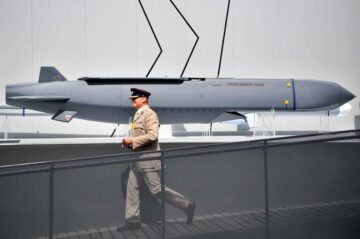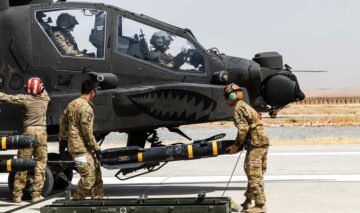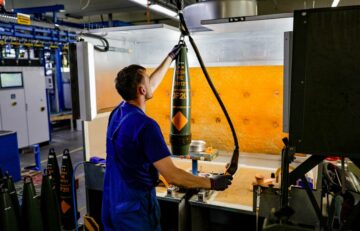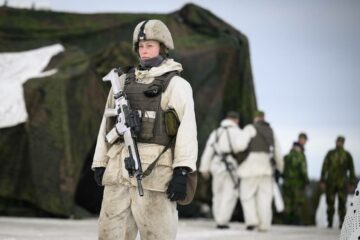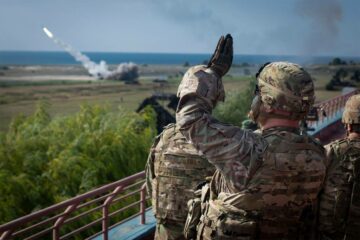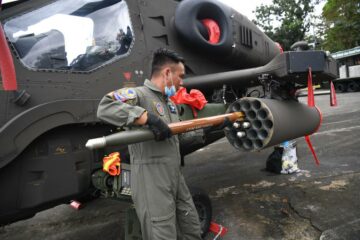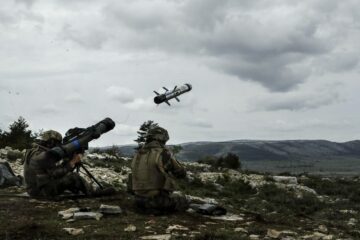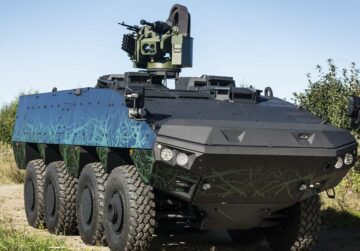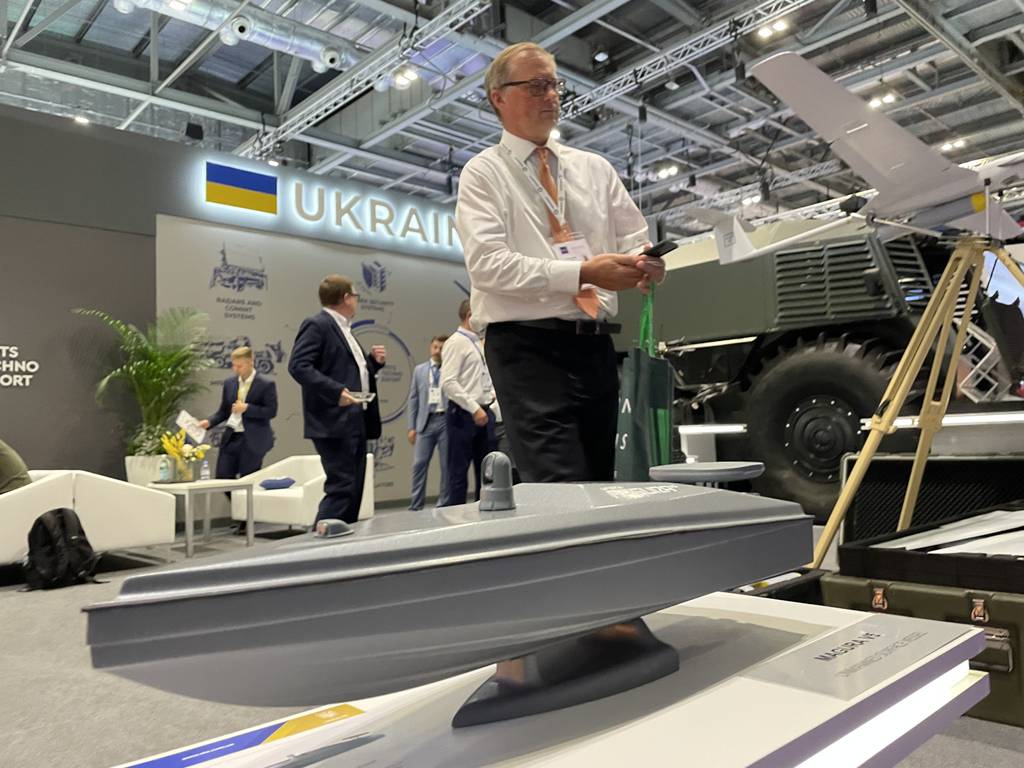
LONDON — Ukraine’s success in attacking Russian forces with naval drones is fast-tracking Moscow’s efforts to repel these weapons, producing lessons for Western navies in process, according to experts.
In August, social media reports claimed that the Main Directorate of Intelligence of the Ukrainian Ministry of Defense released footage showing naval drones carrying out an attack in the Black Sea on Russian vessels.
The unmanned surface vessel in the grainy video is the Magura V5, manufactured by SpetsTechnoExport (STE), a Ukrainian state-owned foreign trade enterprise based in Kyiv. The company, present at the DSEI defense exhibition here, declined to comment the operation, citing security reasons.
However, a white paper circulated by the company here stated that the Magura V5 is “the world’s first maritime drone with public video confirmation of hitting legitimate targets, including warships.”
Although the naval drone was designed for reconnaissance and surveillance missions, it can also carry out strike operations. An STE representative at the company’s stand, who asked not to be named, explained that Magura can act as an explosive drone because of its sizable payload of 320 kg (705,5 lbs) and a range of over 830 kilometers (515 miles).
Samuel Bendett, a research analyst at the U.S.-based Center for Naval Analyses’ Russian Studies Program, noted that as the Ukrainians have lacked the capability to challenge the Russian Navy on an equal footing, naval drones are “an asymmetrical response that can get to the enemy vessels at sea or in port.”
At the same time, he added, the attacks are leading Russia to bolster naval defenses.
“USV tactics are constantly changing to inflict the most probable damage on Russian naval assets that also include stationary targets like bridges. So far, parts of Russia’s navy – such as those in Crimea – are adapting better to this threat than others,” Bendett said.
“However, Ukraine’s use of these USVs is also fast-tracking a Russian naval rearmament program to install kinetic, electronic warfare and sensor defenses on ships,” he added.
The cat-and-mouse game that has been playing out around drones was also raised by Maksym Muzyka, the chief executive officer at Armadrone, which produces the Ukrainian Punisher drone.
“We need to continuously adapt our systems in order to be one step ahead,” he told Defense News at the DSEI exhibit. “In two months’ time, Russian systems could be integrated with more advanced capabilities and we need to be prepared to compete with these or do better.”
Both Ukrainian companies face challenges in meeting the overall demand for unmanned systems arising from the conflict. Muzyka highlights that last year, Armadrone could only satisfy about 30% of the requests of the military for Punishers, and that the company would need to up production by three to five times to reach the desired quantity.
For STE, the situation is even more complex, as USVs are more difficult to build from a technology standpoint, given the weight of the platform and payload.
“Since developing the Magura a year and half ago, we have managed to produce approximately in the 100s of these systems, but we are actively working to increase our production rate,” the STE official said.
Elisabeth Gosselin-Malo is a Europe correspondent for Defense News. She covers a wide range of topics related to military procurement and international security, and specializes in reporting on the aviation sector. She is based in Milan, Italy.
- SEO Powered Content & PR Distribution. Get Amplified Today.
- PlatoData.Network Vertical Generative Ai. Empower Yourself. Access Here.
- PlatoAiStream. Web3 Intelligence. Knowledge Amplified. Access Here.
- PlatoESG. Automotive / EVs, Carbon, CleanTech, Energy, Environment, Solar, Waste Management. Access Here.
- PlatoHealth. Biotech and Clinical Trials Intelligence. Access Here.
- ChartPrime. Elevate your Trading Game with ChartPrime. Access Here.
- BlockOffsets. Modernizing Environmental Offset Ownership. Access Here.
- Source: https://www.defensenews.com/unmanned/2023/09/14/ukraine-seeks-upper-hand-in-cat-and-mouse-game-of-naval-drones/
- :has
- :is
- :not
- $UP
- 10
- 320
- 70
- a
- About
- According
- Act
- actively
- adapt
- added
- advanced
- ago
- ahead
- also
- an
- analyst
- and
- approximately
- ARE
- around
- AS
- asked
- Assets
- At
- attack
- Attacking
- Attacks
- AUGUST
- aviation
- based
- BE
- because
- been
- Better
- Black
- bolster
- bridges
- build
- but
- by
- CAN
- Can Get
- capabilities
- capability
- carry
- carrying
- Center
- challenge
- challenges
- changing
- chief
- Chief Executive
- chief executive officer
- claimed
- comment
- Companies
- company
- Company’s
- compete
- complex
- confirmation
- conflict
- constantly
- continuously
- could
- covers
- damage
- Defense
- Demand
- designed
- desired
- developing
- difficult
- do
- drone
- Drones
- efforts
- Electronic
- Enterprise
- equal
- Europe
- Even
- executive
- Executive Officer
- exhibit
- exhibition
- experts
- explained
- Face
- far
- First
- five
- For
- Forces
- foreign
- foreign trade
- from
- game
- get
- given
- Half
- hand
- Have
- he
- here
- highlights
- hitting
- HTTPS
- images
- in
- include
- Including
- Increase
- inflict
- install
- integrated
- Intelligence
- International
- IT
- Italy
- ITS
- jpg
- Last
- Last Year
- leading
- legitimate
- Lessons
- like
- Main
- managed
- manufactured
- Maritime
- Media
- meeting
- MILAN
- Military
- ministry
- missions
- more
- most
- Named
- Need
- news
- noted
- of
- Officer
- official
- on
- ONE
- only
- operation
- Operations
- or
- order
- Others
- our
- out
- over
- overall
- Paper
- parts
- platform
- plato
- Plato Data Intelligence
- PlatoData
- playing
- prepared
- present
- process
- procurement
- produce
- produces
- producing
- Production
- Program
- public
- quantity
- raised
- range
- Rate
- reach
- reasons
- related
- released
- Reporting
- Reports
- representative
- requests
- research
- response
- Russia
- russian
- s
- Said
- same
- SEA
- sector
- security
- Seeks
- she
- ships
- showing
- situation
- sizable
- So
- so Far
- Social
- social media
- specializes
- stand
- standpoint
- state-owned
- stated
- Step
- strike
- studies
- success
- such
- Surface
- surveillance
- Systems
- tactics
- targets
- Technology
- than
- that
- The
- These
- this
- those
- threat
- three
- time
- times
- to
- told
- Topics
- trade
- two
- Ukraine
- Ukraines
- Ukrainian
- Ukrainians
- use
- Vessel
- vessels
- Video
- was
- we
- Weapons
- weight
- Western
- which
- white
- white paper
- WHO
- wide
- Wide range
- with
- working
- world’s
- would
- year
- zephyrnet

